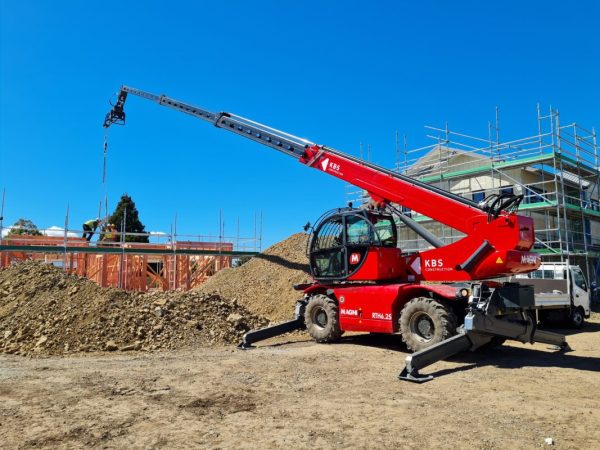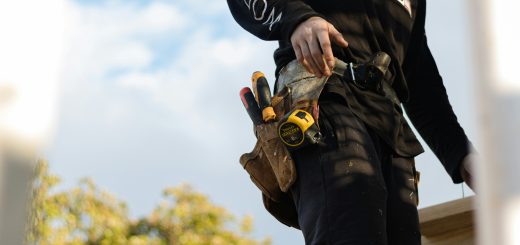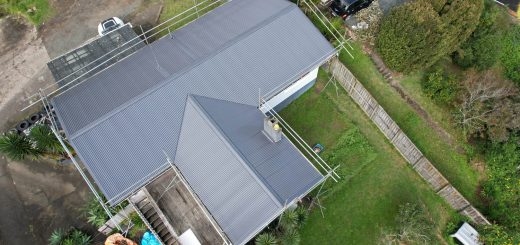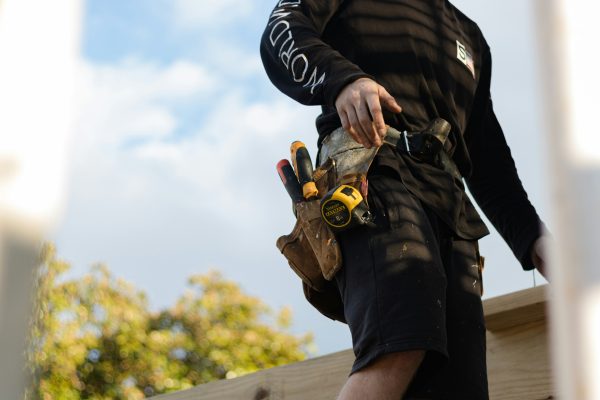Maximising Efficiency: How Telehandlers Can Transform Your Worksite
 On any construction site, time is money. Delays and inefficiencies can significantly impact project budgets and deadlines. That’s why contractors across New Zealand are increasingly turning to telehandlers to maximise their operational efficiency. These versatile machines offer a powerful combination of lifting capacity, reach, and manoeuvrability, transforming how tasks are completed on worksites.
On any construction site, time is money. Delays and inefficiencies can significantly impact project budgets and deadlines. That’s why contractors across New Zealand are increasingly turning to telehandlers to maximise their operational efficiency. These versatile machines offer a powerful combination of lifting capacity, reach, and manoeuvrability, transforming how tasks are completed on worksites.
This article explores the many ways telehandlers can significantly enhance productivity and safety on your projects. From eliminating manual lifting to reaching previously inaccessible areas, telehandlers offer a multitude of benefits that can streamline your operations and keep your projects on track.
The Versatility of Telehandlers
Telehandlers are workhorses of the construction industry, renowned for their adaptability to various tasks. Here’s a closer look at their core functions and the diverse attachments that extend their capabilities:
- Lifting and Moving Heavy Materials: Telehandlers excel at lifting and transporting heavy building materials like steel beams, concrete blocks, and trusses. Their telescopic booms allow for precise placement, even at significant heights.
- Reaching High and Difficult-to-Access Areas: Unlike traditional forklifts, telehandlers boast telescopic booms that extend horizontally and vertically. This exceptional reach makes them ideal for tasks like installing roofing materials, placing HVAC units, or maintaining tall structures.
- Different Attachments: The true versatility of telehandlers lies in their wide range of compatible attachments. Some of the most common attachments include:
- Buckets: Ideal for scooping, loading, and levelling loose materials like dirt, gravel, or mulch.
- Forks: Perfect for transporting palletised materials or bulky items.
- Jibs: Extend the lifting capacity of the boom for even greater reach when needed.
- Winches: Provide additional pulling or dragging power for specific tasks.
The next section explores real-world examples demonstrating how these attachments are used in various construction projects.
Time and Labour Savings
Telehandlers are more than just powerful machines; they’re about streamlining workflows and maximising efficiency on your projects. Here’s how they can significantly reduce manual labour and expedite tasks:
Reduced Manual Labour
Telehandlers eliminate the need for manual lifting and carrying of heavy materials. This not only reduces worker fatigue and the risk of injuries but also frees up valuable manpower for other crucial tasks. Imagine a crew effortlessly placing trusses onto a building frame using a telehandler instead of manually lifting and positioning them – a significant timesaver and safety improvement.
Expediting Tasks
The telescopic boom and various attachments allow telehandlers to complete tasks much faster compared to traditional methods. For instance, using a telehandler with a bucket to scoop and load loose materials like gravel into a truck is considerably quicker than shovelling by hand. Similarly, telehandlers with pallet forks can efficiently transport and stack building supplies, accelerating construction progress.
The next section will focus on how telehandlers contribute to enhanced safety on worksites.
Safety Enhancements
Construction sites can be inherently risky environments. Telehandlers, when used correctly, can significantly contribute to a safer workplace by minimising risks and promoting safe work practices. Here’s how:
- Minimising Risks: Telehandlers come equipped with several features designed to prioritise operator safety and stability. These features may include:
- Load Limiters: Prevent overloading, a major cause of tipping accidents.
- Anti-Two Block System: Ensures the boom doesn’t come into contact with the cabin, protecting the operator.
- Stability Control Systems: Electronically monitor weight distribution and prevent tipping by automatically adjusting functions like boom extension or travel speed.
- Advanced Braking Systems: Provide shorter stopping distances and increased control, especially on uneven terrain.
- Operator Training: While telehandlers offer inherent safety features, proper operator training is paramount. Trained operators understand the machine’s capabilities and limitations, safe operating procedures, and proper inspection techniques. In New Zealand, a Class F Driver Licence with a TL endorsement is required to operate a telehandler.
The next section will explore the cost-efficiency benefits of telehandlers.
Cost Efficiency
Telehandlers may seem like a significant investment upfront. However, they offer several advantages that translate to long-term cost savings for your business. Here’s how:
- Operational Costs: While telehandlers require fuel and maintenance, they can often replace the need for renting multiple specialised machines or hiring additional labour. This consolidation can lead to reduced overall operational costs.
- Return on Investment (ROI): The increased efficiency and productivity achieved with telehandlers can significantly improve project completion times and reduce labour costs. This translates to a strong return on investment over time.
The next section will discuss the adaptability of telehandlers to various worksites beyond construction.
Adaptability to Different Worksites
Telehandlers are not just confined to construction sites. Their versatility extends to a wide range of applications across numerous industries:
- Construction Sites: Telehandlers are ubiquitous on construction sites, playing a vital role in various stages of building projects. From erecting walls and laying trusses to lifting machinery and placing cladding, their reach and lifting capacity streamline construction workflows.
- Agricultural Uses: In the agricultural sector, telehandlers prove highly valuable. They can be used for tasks like loading and unloading bales of hay, transporting feed, cleaning out buildings, and stacking palletised goods. Some attachments, like manure forks or grapple buckets, further enhance their agricultural functionality.
- Industrial Applications: Telehandlers find their place in various industrial settings. They can be used for machinery maintenance in warehouses, loading and unloading trucks and containers in logistics yards, or assisting with plant maintenance in industrial facilities.
The next section will explore how to choose the right telehandler for your specific needs.
Choosing the Right Telehandler for Your Needs
With a vast array of telehandlers available, selecting the perfect model for your projects requires careful consideration. Here are some key factors to consider when making your choice:
Types of Telehandlers:
- Fixed Boom: Offers a simpler design with a fixed telescopic boom, ideal for straightforward lifting tasks where precise manoeuvrability isn’t essential.
- Rotating Boom: Provides greater versatility with a boom that can rotate 360 degrees. This makes them perfect for applications requiring lifting and placing materials from various angles.
Factors to Consider:
- Load Capacity:
- Choose a telehandler with a lifting capacity that exceeds your heaviest material requirements.
- Factoring in a safety buffer for unexpected weight variations is recommended.
- Reach:
- Evaluate the maximum reach required for your tasks. Consider both the horizontal and vertical reach capabilities of the telehandler.
- Terrain Adaptability:
- If working on uneven or soft surfaces, consider telehandlers with features like four-wheel drive or crab steering for enhanced manoeuvrability on challenging terrain.
APS Equipment Offerings:
APS Equipment is the authorised distributor of Magni telehandlers in New Zealand. Magni is a world-renowned brand known for its innovative design, reliability, and exceptional performance. This means APS Equipment offers a comprehensive range of high-quality Magni telehandlers to suit various project needs. Their knowledgeable staff can assist you in assessing your project requirements and recommend the most suitable Magni telehandler for your specific needs.
By considering these factors and consulting with the experts at APS Equipment, you can ensure you choose the right telehandler to maximise efficiency and productivity on your projects.
Conclusion
Telehandlers are more than just versatile lifting machines; they’re powerful tools for transforming jobsite efficiency and safety. Their ability to handle diverse tasks, exceptional reach, and wide range of attachments make them invaluable assets for construction companies, agricultural businesses, and various other industries.
By minimising manual labour, expediting tasks, and enhancing safety, telehandlers can significantly improve project completion times and reduce overall costs. When considering the right telehandler for your requirements, factors like load capacity, reach, and terrain suitability are crucial.
APS Equipment, the authorised distributor of Magni telehandlers in New Zealand, offers a comprehensive range of these top-quality machines. Their expert staff can guide you through the selection process to ensure you choose the perfect telehandler to optimise your projects.
If you’re looking to streamline operations, improve safety, and achieve greater efficiency on your worksites, look no further than telehandlers. Contact APS Equipment today to discuss your telehandler requirements and explore how these machines can take your projects to the next level.






